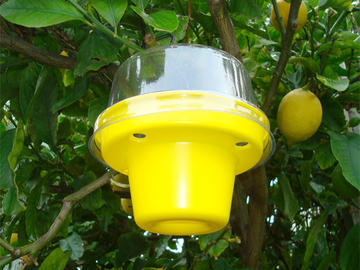A Guide To A Fruit Fly Management Program
Managing fruit flies requires a combination of procedures and these include:-
- Monitoring
- Baiting / Trapping
- Cover Sprays
- Hygiene
- Netting / Harvesting Early
Monitoring: An essential element in fruit fly management using synthetic chemical male attractants in an appropriate trap. Monitoring provides an indication on fruit fly activity traps need to be checked weekly and fly numbers recorded.
Baiting: a tried and tested method for fruit fly management where a protein bait and an approved insecticide is diluted with water and either spot sprayed or band sprayed on the trees. This procedure should be conducted at least weekly, commencing when fruit flies are first monitored and continued at least two weeks post-harvest or until monitoring traps indicate no presence of flies. Repeat baiting following rainfall or monitoring indicates a build-up of flies. Some baits and insecticide combinations may cause fruit spotting, check before you apply.
Trapping: Using protein attractants can be done as mass trapping, individual trees or perimeter protection. There are a number of home brews and some very effective commercial products available for this application.
Border Protection / Mass Trapping: These lures have proven to attract both male and female flies and are used within a trap containing a cube of DDVP (Dichlorvos). This trap and lure combination can be used as “Border Protection” where traps are placed at 15 meter spacing around the perimeter of the orchard or as “Mass Trapping”. With border protection it is advisable to support this by bait spraying within the crop. Mass trapping is a system where 50-80 traps per hectare are used as a stand alone system, traps should be concentrated around the borders. With either system it is important to hang traps early at least 6-8 weeks prior fruit ripening.
Cover Sprays: These where the most popular and effective method for fruit fly management but recent changes to their use has forced commercial growers to seek alternatives. There are still some uses for cover sprays but these are limited, it is essential to check current recommendations for these products.
Hygiene: Again one of the important elements of a fruit fly management program; it is essential to remove unwanted fruit and dispose of correctly. Do not leave fruit on the ground and on the tree. Remove any struck or damaged fruit.

